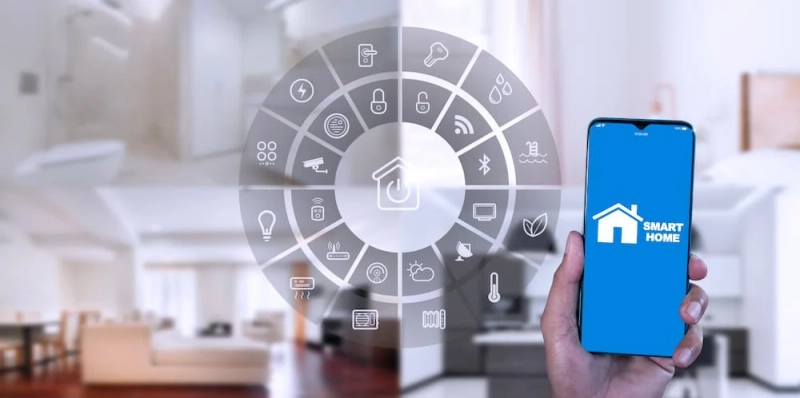Smart homes are no longer a futuristic concept—they're fast becoming the new standard in residential living. With the convenience of voice-activated lighting, app-controlled heating, and interconnected security systems, more homeowners are investing in smart technology. However, the backbone of every smart home is proper wiring—and when it’s not done right, even the most expensive devices can underperform or fail completely.
In this article, we’ll explore the most common mistakes made in smart home wiring and how to avoid them to ensure your home is future-ready, safe, and efficient.
1. Underestimating Future Needs
Many homeowners make the mistake of wiring only for their current needs. However, smart home technology is evolving rapidly. What seems advanced today may be basic in just a few years.
How to Avoid It
Plan your wiring layout with flexibility in mind. Include extra conduits, spare wiring, and network points in different rooms—even those not currently in use. This ensures your home can easily adapt to future tech upgrades without needing a complete electrical overhaul.
2. Lack of Structured Cabling
Some people assume Wi-Fi will handle all their smart devices. While wireless connections are important, overloading your Wi-Fi with multiple smart devices can cause reliability issues and slow performance.
How to Avoid It
Use a combination of structured cabling (like Cat6 or Cat6a Ethernet cables) and wireless technology. Hardwiring critical components—such as security cameras, smart TVs, and hubs—improves speed, reduces interference, and enhances system reliability.
3. Improper Placement of Network Hardware
Installing routers, access points, and hubs in enclosed or inconvenient locations can lead to signal dead zones and poor system performance.
How to Avoid It
Strategically position network equipment for optimal coverage. Consider ceiling-mounted access points for even distribution of Wi-Fi, and place routers in central, open locations. Make sure they’re easily accessible for maintenance and upgrades.
4. Overcomplicating the System
It’s easy to get caught up in having the latest gadgets for every room. But without a streamlined system, managing your devices can become confusing and inefficient.
How to Avoid It
Stick to a single ecosystem or platform where possible (like Apple HomeKit, Google Home, or Amazon Alexa). This ensures compatibility and reduces the risk of devices not communicating properly. Work with a professional who can help design a system that’s user-friendly and scalable.
5. Skipping Professional Help
DIY installations are common, but smart home wiring is more complex than traditional setups. Mistakes in voltage handling, circuit loading, or device compatibility can lead to costly repairs or even safety hazards.
How to Avoid It
Always consult a certified professional. Whether you’re setting up a full automation system or just installing smart lighting, a qualified Electrician Sevenoaks or Electrician Tunbridge Wells can ensure everything is safely and correctly wired according to current regulations.
6. Ignoring Power Requirements
Some smart devices, such as thermostats and video doorbells, require constant power or specific voltage levels. Homeowners often install these without checking whether existing wiring can support them.
How to Avoid It
Before purchasing devices, review their power requirements. Ensure you have neutral wires where needed (especially for smart switches), and avoid overloading circuits. If unsure, seek advice from a professional electrician.
7. Neglecting Surge Protection
With the amount of electronics in a smart home, a power surge can be devastating—damaging multiple devices in a single incident.
How to Avoid It
Install whole-home surge protection at the main electrical panel. Additionally, use surge-protected outlets or power strips for sensitive devices. This simple step can save thousands in potential damage.
8. Poor Labeling and Documentation
A common oversight is failing to label wires or document what’s been installed and where. This makes future maintenance, upgrades, or troubleshooting a nightmare.
How to Avoid It
Label every cable and wire during installation. Keep a clear record (digital or printed) of the wiring layout, connection points, and device specifications. It will save time, money, and confusion later on.
9. Not Considering Load Balancing
Smart homes may have multiple devices drawing power simultaneously, especially with electric heating, lighting, or appliances. Ignoring proper load distribution can cause circuit breakers to trip frequently.
How to Avoid It
Have a professional calculate the power load for each circuit and distribute devices accordingly. Consider installing smart breakers or load management systems if your setup is extensive.
10. Failing to Test the System Properly
After installation, skipping system checks can leave undetected issues that affect performance or safety.
How to Avoid It
Test every device, connection, and automation sequence before considering the setup complete. Include backup tests for power failures or connectivity drops to ensure the system performs reliably in all conditions.
Final Thoughts
Creating a smart home that functions seamlessly starts with proper wiring. By avoiding these common mistakes, homeowners can ensure their technology investment delivers the convenience, security, and efficiency it promises.
A successful smart home isn’t just about having the latest gadgets—it’s about building a solid infrastructure behind the scenes. That’s why working with experienced professionals like a trusted Electrician in Sevenoaks or Electrician in Tunbridge Wells is essential for getting it right the first time.



